模拟数据
url,paras,method,except
http://www.baidu.com, {k=12}, get, 200
请求url (接口文档) 参数 请求方法 预期返回响应状态码
pytest + requests + allure
csv存储数据 或者 xlsx(excel)
通过获取里面中的数据 和 request(通过url接口中返回的响应信息)
判断两者之间的数据是否一致 (pytest中执行,打断点(判断assert),传参的形式传进去并判断)
最终通过allure 的形式生成测试报告的框架
?
需要安装pytest和pytest-html(生成html测试报告)
pip install pytest
pip install pytest-html
命名规则
Pytest单元测试中的类名和方法名必须是以test开头,执行中只能找到test开头的类和方法,比unittest更加严谨
unittest:Setup>> setupclass teardown teardownclass(课堂作业)
Pytest的setup, setup_class和teardown, teardown_class函数(和unittest执行效果一样)
运行于测试方法的始末,即:运行一次测试函数会运行一次setup和teardown
运行于测试方法的始末,但是不管有多少测试函数都只执行一次setup_class和 teardown_class
直接执行pytest.main()
【自动查找当前目录下,以test_开头的文件或者以_test结尾的py文件】(课堂练习_test)
pytest.main("模块.py")
【运行指定模块下,运行所有test开头的类和测试用例】
pip install pytest-html() :python自带的插件
pytest.main(["--html=./report.html","test3.py"])
#导入pytest包
import pytest,os
class Test_Abc():
def test_a_001(self):
assert 2==2
def test_a_002(self):
assert 1==2
def test_a_0033(self):
assert 1==2
if __name__ =="__main__":
#直接执行pytest.main() 【自动查找当前目录下,运行所有test开头的类和测试用例】
#pytest.main()
#运行指定模块所有用例
#pytest.main([‘test_001.py‘])
#pip install pytest-html设置pytest的执行参数,【执行test开头.py文件,并生成html格式的报告】
#pytest.main([‘--html=./report.html‘, ‘test_001.py‘])
#运行指定模块指定类指定用例,冒号分割
#pytest.main([‘--html=./report.html‘,‘test_001.py::Test_Abc::test_a_001‘])
#-x出现一条测试用例失败就退出测试
pytest.main([‘-x‘,‘--html=./report.html‘,‘test_001.py‘])

pytest.main([‘--html=./report.html’,‘模块.py::类::test_a_001‘])
运行指定模块指定类指定用例,冒号分割,并生成测试报告
pytest.main([‘-x‘,‘--html=./report.html‘,‘t12est000.py‘])
-v: 丰富信息模式, 输出更详细的用例执行信息
-s:显示print内容
-q: 简化结果信息,不会显示每个用例的文件名
.点号,表示用例通过
F表示失败Failure
E 表示用例中存在异常Error
Allure是一款轻量级并且非常灵活的开源测试报告框架。 它支持绝大多数测试框架, 例如TestNG、Pytest、JUint等。它简单易用,易于集成。
首先要安装allure
pip install allure-pytest
allure-pytest是Pytest的一个插件,通过它我们可以生成Allure所需要的用于生成测试报告的数据
@allure.feature # 用于描述被测试产品需求
@allure.story # 用于描述feature的用户场景,即测试需求
with allure.step(): # 用于描述测试步骤,将会输出到报告中
allure.attach # 用于向测试报告中输入一些附加的信息,通常是一些测试数据,截图等
allure.feature # 用于描述被测试产品需求
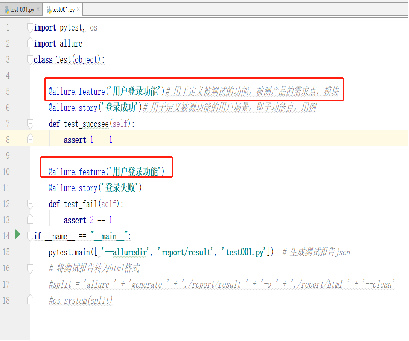
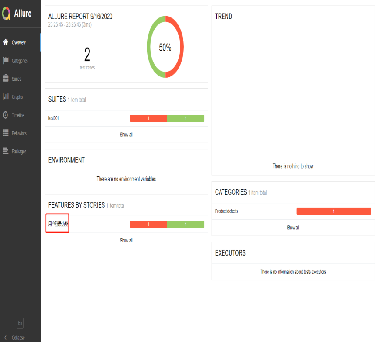
@allure.story # 用于描述feature的用户场景,即测试需求

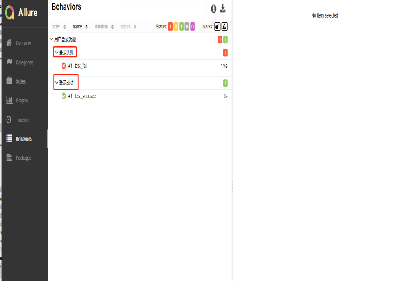
Pytest和allure结合生成html格式的测试报告
生成测试报告json
pytest.main([ ‘--alluredir‘, ‘report/result‘, ‘test001.py‘]) ## 将测试报告转为html格式 --html=../report.html split = ‘allure ‘ + ‘generate ‘ + ‘./report/result ‘ + ‘-o ‘ + ‘./report/html ‘ + ‘--clean‘ os.system(split)#system函数可以将字符串转化成命令在服务器上运行
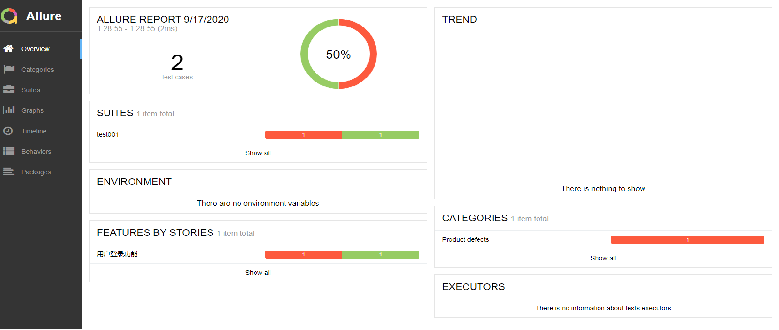
读取文件中的数据
requests拿到数据请求接口返回状态码
通过断言验证返回状态码和200对比
生成allure的测试报告
模块总览 dataDemo(存放数据)>> readDemo(读取数据) useRequests(发送请求)>>testDemo(生成报告)
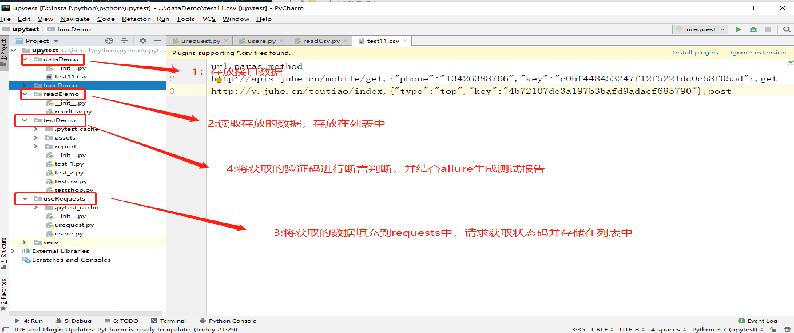
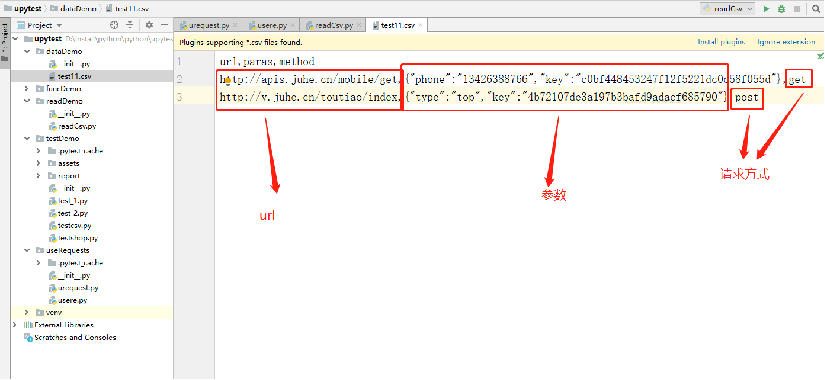
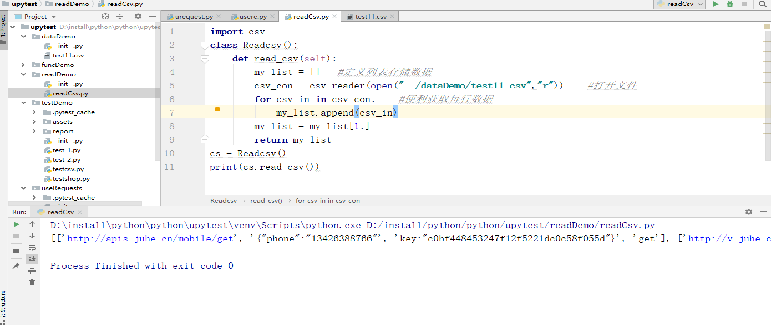

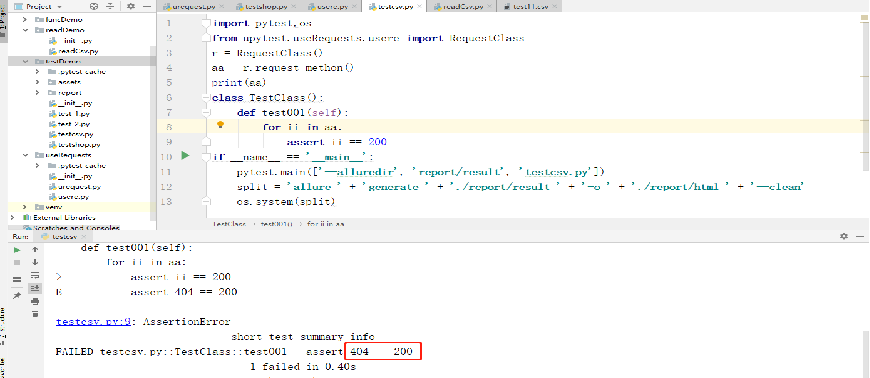
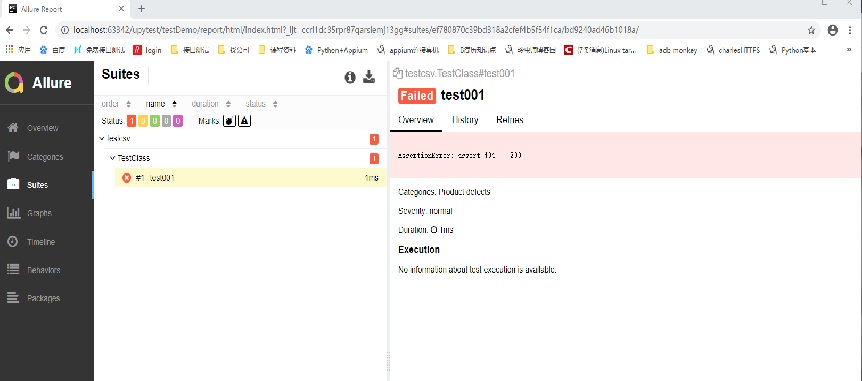
原文:https://www.cnblogs.com/djl-0628/p/14701803.html